Strawberry plants are relatively small compared to other berries, but they certainly punch above their weight in terms of productivity. Strawberries generally have two main productivity patches. One in early summer and one in autumn. Essentially, they produce just before and just after the summer Blueberry glut.
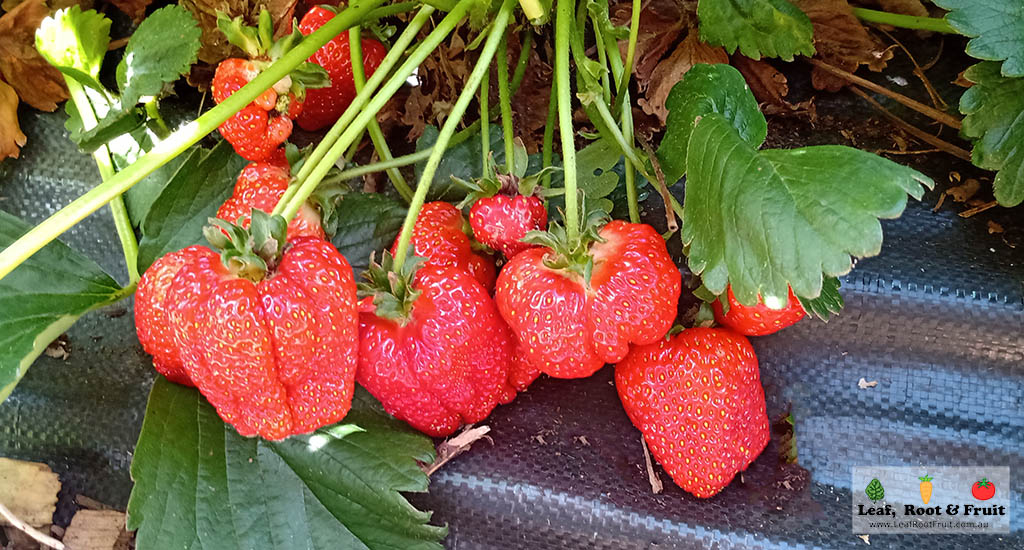
A household with 5 people, will need around 20 to 25 plants, to get a decent harvest throughout summer and autumn. This summer we picked over 30kg of strawberries from a single 17 metre long row of plants (about 54 plants in total).
Different varieties fruit at different times. You can get varieties that fruit as early as October and as late as May. Planting different varieties (such as a combination of Adina, Lowanna, Red Gauntlet and Tioga) ensure continuous harvest over a long period.
Preparation and Planting of Strawberries
Strawberries can “reproduce” either through seeds or from runners. Although most commercial varieties don’t produce viable seeds. Strawberry runners are horizontal stems that run above the ground and produce new “baby” clone plants at the end of the long horizontal stem. These baby plants (which are a genetic copy of the mother plant), set roots and grow into the ground surrounding the mother plant.
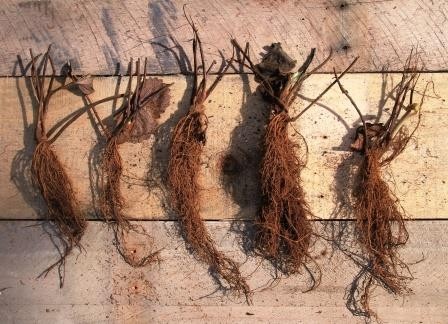
Runners are a more reliable and preferred method for establishing strawberries in your garden. Check out our guide to planting strawberry runners for more information.
You can also buy potted strawberry plants to plant into your garden. Although this option is only suitable for those wanting to grow a couple of plants. It is far more economical to buy and plant strawberry runners.
Where to Plant Strawberries?
Strawberries have two main requirements when considering planting locations:
- a sunny spot
- good drainage
You can grow them in garden beds, pots, hanging baskets. Their small size makes them very popular in vertical gardening, which has the added benefit of keeping the fruit off the ground, away from dirt and slugs. Strawberries need plenty of water over the summer months, so make sure you put them in a spot that is easy to water.
At the time of planting, you can work through some well composted manure (chicken manure is a good idea) or some compost. Alternatively, you can apply it as a top dressing soon after planting. A sprinkle of blood and bone, (with added potash) will help them thrive. Make sure that you use a quality potting mix if growing them in pots. Keep the soil moist (but not too wet in the cooler months) then increase watering as the days warm up in the spring.
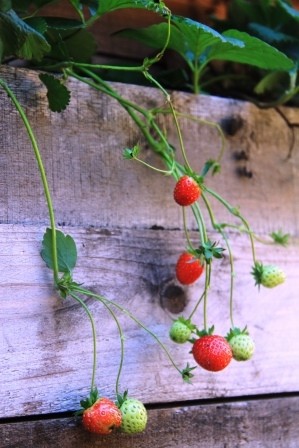
Maintenance and Watering of Strawberry Plants
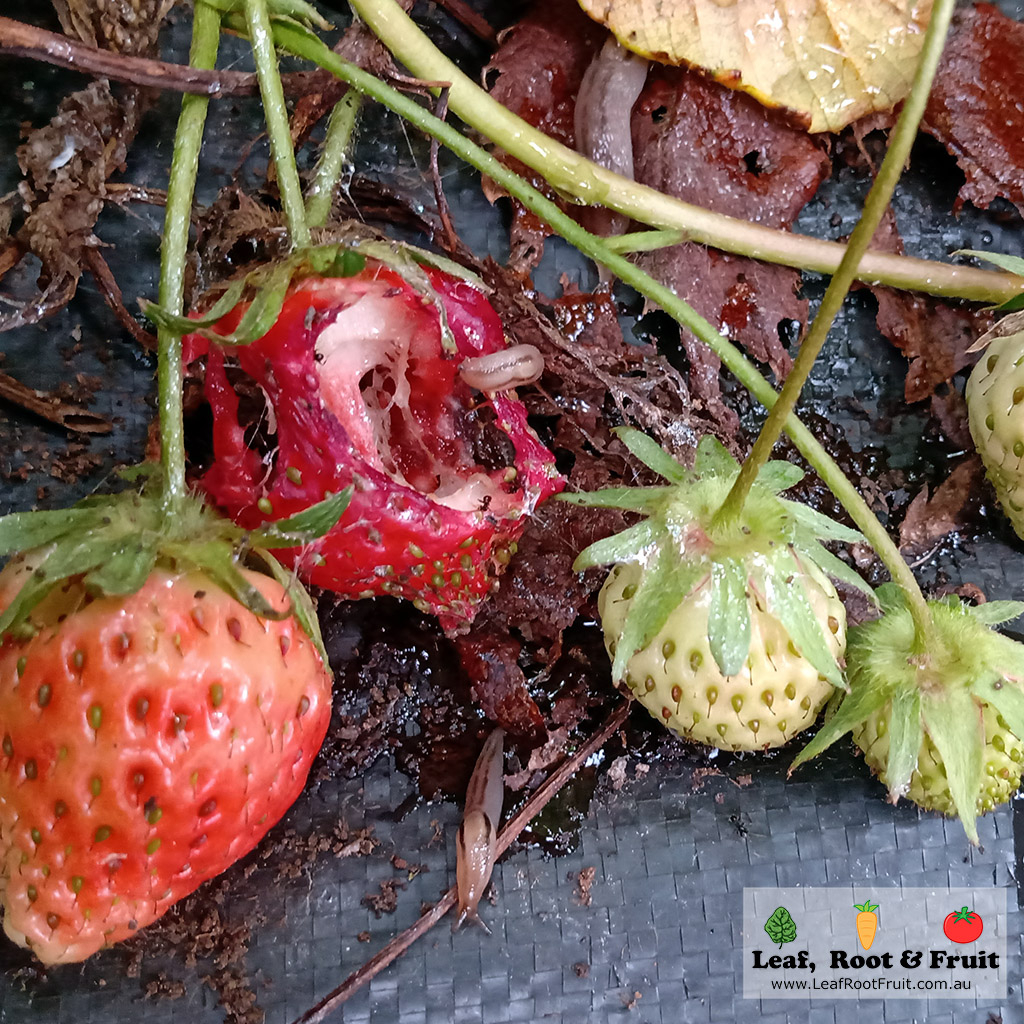
Once the plants have become established and the weather starts to warm up, some pea straw or similar mulch around the plants is a good idea. This helps to keep the fruit off the soil so it stays clean and helps ward off slugs and snails, that will target your fruit. As the fruit begins to develop, you’ll really need to keep those slugs and snails under control. Birds might also need to be kept at bay with some netting or mesh.
I have also tried using weed mat to suppress weeds and keep the fruit off the soil. This has been relatively successful. Sometimes using wood chips or straw can harbour slugs that come out during rainfall events to attack ripening fruit.
Try to avoid getting water on the leaves of your strawberry plants. To help reduce fungal diseases use drip irrigation or direct the hose onto the soil surface rather than the leaves.
Odd shaped or deformed strawberries are often a result of poor pollination. Bee attracting flowering plants like borage make great companion plants around the edges of your strawberry patch.
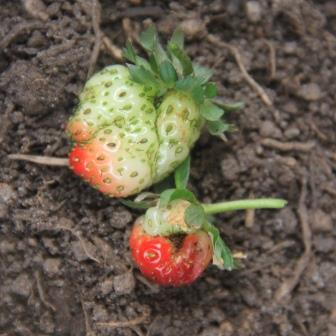
Propagating Your Own Strawberry Plants
Originally grown from runners, the strawberry reproductive cycle will continue with your plants and they will also produce runners. We recommend cutting off any runners that appear to encourage more fruit and a bigger harvest. Although you can easily propagate more plants from these runners to extend your productive patch or share with friends and family.
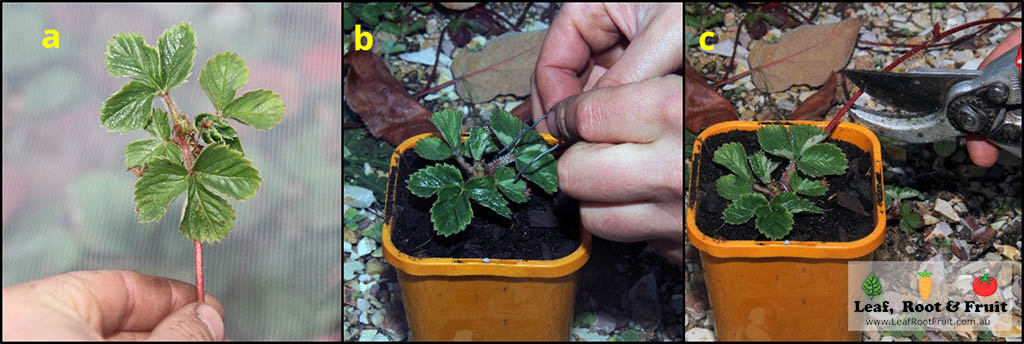
a) Find a loose strawberry runner. Some varieties of strawberries are more prone to generating runners than others.
b) Pin the loose strawberry runner so that the base is in contact with soil or potting mix.
c) Over time the strawberry runner will develop a root system strong enough to support the new plant. At this stage it can be separated from the mother plant by cutting the runner.
Alpine Strawberries
Alpine strawberries are more like the original wild type of strawberry. They tend to tolerate heavy shade. The fruit tends to be quite small and soft so you will never find them in the supermarket. However, the flavour of alpine strawberries is far superior to the larger commercial varieties. Another bonus of the alpine strawberry is that they can be grown from seed (and often spread by self-sowing). White varieties are often left alone by birds. Alpine strawberries are a great addition to the understory of edible forest gardens and children’s gardens.
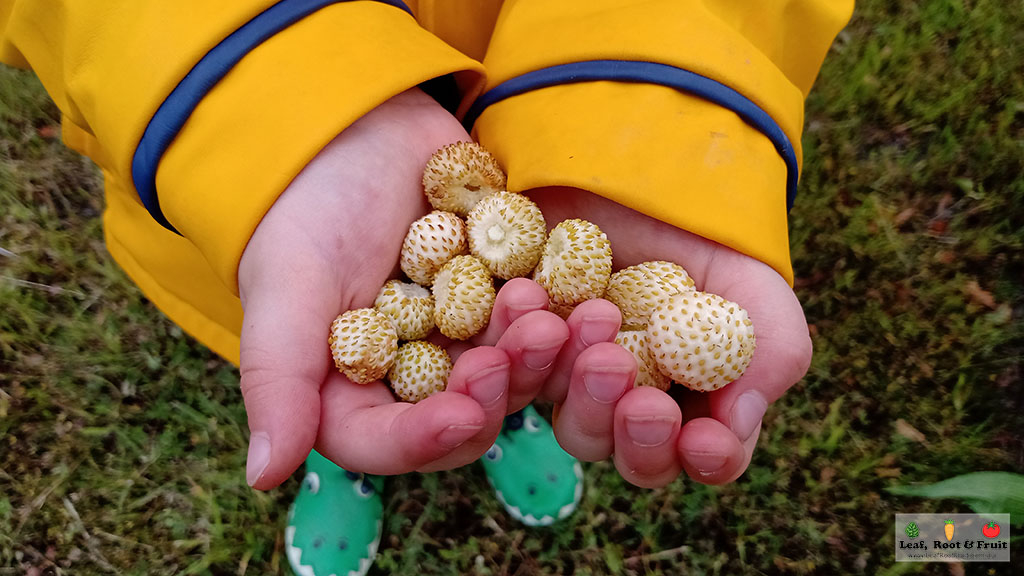
Looking to supplement your strawberries? Why not try growing raspberries or blueberries as well. They are just as easy to grow and perhaps even more productive!
Check out:
Sign up to our free monthly newsletter for plenty more hints and tips about growing your own food.

